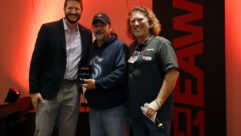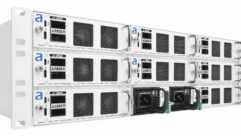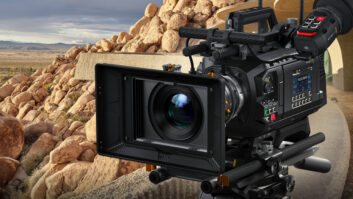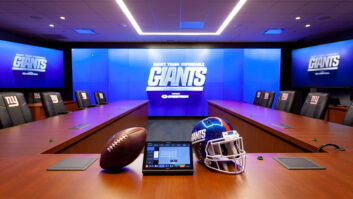RESIDENTIAL CONTRACTOR’S PRODUCT SOURCE GUIDE
Sep 1, 2001 12:00 PM,
Peter Putman, CTS
There is an ancient curse that states, “May you live in interestingtimes.” Well, “interesting times” is an apt description of the pastdecade when it comes to the evolution of home electronic displays. Nottoo long ago, there were three choices for home viewing of vidceo: adirect-view TV set, a rear-projection TV or a front-projection TV.Today, there’s a bewildering array of display technologies withall the growth in flat-matrix imaging. You want acronyms? We’vegot ‘em, from TFT LCD to PDP, D-ILA to DLP, LCoS to P-si. These,too, come in direct-view, rear-projection, and front-projectiondesigns. Not only that, we also have more signals (and acronyms) tohook up to them, from VHS to DVD, 480p to 1080i, and DBS to D-VHS.
Scratching your head right now? So are millions of consumers acrossthe country, trying to decide if their next TV should be a 32-inch CRT,52-inch rear-projection DLP set, or a 50-inch plasma panel. Are any ofthese new products viable? Why would you want one over the others? Whatabout reliability? Signal compatibility?
Stop scratching your head and read on.
Holding Fast
Despite the wave of flat-matrix devices now available for consumers, itmay surprise you that cathode-ray tube technology is still king of thehill when it comes to home entertainment. CRTs can be cheaplymanufactured and they provide good color quality and sufficientresolution for everything from casual channel surfing to full-blownhome theaters.
Direct-view CRTs can be purchased for well under $300 in smallersizes, and models with some degree of DTV signal compatibility can bepurchased for under $2000. Rear-projection TV monitors with thecapability to show DTV signals range in price from just over $2000 toover $10,000, while front CRT projectors range from about $8000 to over$40,000.
CRT technology is mature. It’s been around a while and hasbeen given new life by the adoption of computer display standards andthe introduction of digital television. With skilled hands, you can getsome truly amazing pictures from CRTs, particularly those using 8-inchor 9-inch projection tubes to show 720p or 1080i high-definitionTV.
While the CRT is holding fast with consumers and home theaterafficionados, it’s beating a hasty retreat in the commercial,professional audio-visual, and information-technology markets. Thereason is simple: These markets are more focused on simplicity ofoperation and factors like portability, light output, reduced spacerequirements and direct digital interfaces.
All of these requirements can be provided by flat-matrix displays,but CRT technology comes up short in more than one area (such asbrightness, size and weight). The advantages of some flat-matriximaging systems are becoming apparent to consumers as well, and thesetechnologies—although still fairly expensive—are beginningto show up in living rooms, dens and family rooms.
Lucy in the Clouds with Diamonds
Let’s take a little tour through each of the flat-matrixtechnologies you will encounter as you choose that new front, rear ordirect-view display for your next installation. To clarify, aflat-matrix device is flat (obviously) and contains a fixed matrix ofimaging pixels. Unlike a CRT, the resolution of a flat-matrix device isconstant, regardless of whether it is turned on or off. That pixelresolution can be physically measured and is often referred to as the“native resolution” or “sweet spot” of theflat-matrix device. With the exception of plasma panels, allflat-matrix devices are manufactured from silicon wafers—justlike integrated circuits.
First up is the Liquid-Crystal Display panel, the grandfather of allflat-matrix devices. The unique property of LCD—birefringence, orthe ability to split light into two planes—was observed as farback as the late 1800s. But it took until 1970 for LCD technology tobecome practical for the mass market.
Today, Sony and Epson churn out practically all of thehigh-temperature polysilicon (Psi) LCD panels used indesktop/installation, portable, and ultra/microportable video/dataprojectors. “Polysilicon” describes the chemicalformulation of the silicon used to form the tiny, semi-transparentswitching transistors that lie atop each of the imaging pixels.
Polysilicon LCDs (and their big brothers, the amorphous LCDs usedfor the screens on notebook computers) are transmissive,light-shuttering imaging devices. Psi-LCDs require an externalprojection lamp, and the movement of the tiny liquid crystals in eachpixel acts like a miniature venetian blind to make images darker orlighter.
LCD panels as small as 0.7 inches diagonally are commerciallyavailable in resolutions up to 1024×768 pixels. The projectors in whichthey are installed have become quite small and light, creating a newcategory of coffee-table home theater that is very popular in the tinyrooms of some Japanese households—places where a largerear-projection CRT TV would be impractical.
AM LCD panels are also finding their way into homes, commonly asfold-down TV sets for kitchens and other tight spaces. These panelstypically have a maximum resolution of 640×480 pixels (VGA), which issufficient for viewing TV. In this case, the light source is afluorescent lamp behind the LCD panel.
One company—Sharp—has introduced a large widescreen(16:9) LCD panel for home and commercial use. It has a nativeresolution of 1280×768 pixels, which is enough to view high-definitionTV and widescreen DVDs fed through a video scaler. This panel and thetiny panels in front LCD projectors still work the same way, using themotion of LCs to shutter light and create grayscale images. Color isadded by built-in filters on large AM LCDs and by using three panelswith color filters with Psi LCDs.
LCD projectors have the look and feel of older slide projectors, butthey are a lot brighter. While LCD designs are very popular in thecorporate, institutional and educational markets, they haven’tcaught on as well with consumers. The single-lens design and simpleoperation does appeal to many people, and the bright images can be usedwith large screens. In fact, a large front screen and LCD projector cancost less than a big-screen CRT TV set.
The limitations of LCDs are largely in the quality of images theyproduce. LCD panels are never really “off” like a CRT iswhen powered down. Some light always leaks through the panel even inits fully-closed state. As a result, the black levels that resultaren’t really black, but a very dark gray.
In a room with normal to high ambient light levels, these levels ofblack aren’t even a consideration. But in a home theater, much ofthe shadow detail in TV programs and movies is lost, or crushed. Theother problem is the native resolution. LCD panels always look bestwhen the input signal source matches the native resolution of thepanel. Anything higher or lower will require resizing, or scaling. Asyou can imagine, this is not an easy process, particularly whenconverting interlaced video with motion to progressive-scan video.
Right now, the choice of an LCD projector for home use is oftenbased on price. Front LCD projectors can be had for under $5000, andthere are a couple of 16:9 models available from Sony (VPL-VW10HT) andToshiba (MT-7) for under $10,000. Unlike front CRT projectors, theywon’t need convergence. In fact, about the only service LCDprojectors do require is a new lamp from time to time, and cleaning orreplacement of the air filter.
Bring in the Silicon
LCD panels can also be manufactured as reflective devices. These panelsfall into a fast-growing class of Liquid-Crystal on Silicon displays,and there are plenty of companies jockeying for market position. LCoSpanels are marketed and branded under a variety of names, such asJVC’s Digital Image Light Amplifier (D-ILA) and Samsung’sFerroelectric LCD (Fe-LCD). To date, only JVC has been able to produceLCoS devices with acceptable manufacturing yields over 80%. Their D-ILAproduct looks very much like a conventional Psi-LCD panel, except ithas a highly polished mirror surface and an opaque backing. It measures0.9 inches diagonally and has a native resolution of 1365×768 pixels(SXGA).
In an LCoS panel, the driving electronics are mounted directly tothe backplane of the LCD. This provides a big advantage overtransmissive LCD light efficiency. Typically, transmissive LCD panelsthrow away 50% of the light passing through them due to polarizationlosses, but reflective LCDs can do much better than that.
The down side is that the optical path for a 3-panel LCoS projectoror RPTV is much more complicated than that seen in a transmissive LCDprojector. That’s because the light is traveling in bothdirections at the same time, although polarized in two differentplanes.
JVC’s early D-ILA projectors were pretty large, but there havebeen size and weight reductions since then. Right now, JVC hasre-introduced the D-Ahlia, a 3-panel D-ILA RPTV ($13,999) that featuresa 61-inch 16:9 screen and uses special 1280×1028 non-square pixel D-ILAdevices. It is also adequate for viewing of HDTV content.
Again, LCoS front projectors and RPTVs do not require convergence(you’d be nuts to try it anyway; it requires laboratory-gradeequipment) and their maintenance will consist of cleaning the airfilter and changing the lamp as needed. One caveat: The lamp used inthe D-Ahlia is a short-arc xenon, and it isn’t cheap. Expect toget about 1000 hours from this lamp and pay about $700 for areplacement.
Donna in the Lake with Pizzas
There’s another way to make images from reflected light, and(oddly enough) this technology was originally intended for use in laserprinters. Texas Instruments’ Digital Light Processing is based onthe digital micromirror device, another silicon-based, flat-matrixwidget that contains thousands of tiny mirrors on its surface. Eachmirror can tilt a maximum of 10˚ from off to on. There’s noin-between; so how does the DMD produce grayscale images? Simple. Byusing a technique known as pulse-width modulation. During any giventime interval, the number of off states and their duration compared tothe number of on states and their duration determines an absolutegrayscale value. Increase the ratio to favor on states, and the imagegets brighter. Favor off states, and the image becomes darker.
DLP is currently the only 100-digital flat-matrix imaging system onthe market, and TI has been very active with numerous partners to buildDLP technology into everything from microportable projectors to 3-chip,super-bright projectors for electronic cinema.
Even so, the biggest potential market for DLP remains withconsumers.At present, three companies—Panasonic, Hitachi andMitsubishi—have presented large-screen (52-inch to 65-inch)rear-projection DLP TV sets. Each model uses a special 16:9 DMD,adapted from TI’s 1280×1024 (SXGA) designs. This 1280×720 DMDcomes with its own color wheel, synchronized to the on and off statesof the mirrors to produce a full-color image. These sets range in pricefrom $13,000 to $18,000. Sharp and PLUS showed front projectorsincorporating the 1280×720 DMD at the recent Winter CES, butdon’t expect these models to show up until the end of 2001. Bothwill be close to (if not over) $10,000 in price when they becomeavailable.
TI recently announced the availability of a widescreen SDTV DMD,this time with 848×480 pixel resolution. Three companies, SIM2Multimedia, PLUS and InFocus, have all announced plans to buildfront-projectors or RPTVs around this wide-VGA DMD, which will probablytarget the under-$5000 market.
DLP technology brings many advantages to the table. Again, there isno convergence required with a single-chip DLP front or rear projector.Maintenance will typically be limited to replacing bulbs and cleaningair filters. Unlike the D-Ahlia (and like LCD projectors and RPTVs), alower-cost short-arc mercury vapor lamp is used (UHP, UHE, NSH, etc.),which will last between 1500 and 2000 hours.
Fast From the Gate
While all of these technologies are trickling into homes across thecountry, there is one imaging system that has really taken off in ahurry. The Plasma Display Panel has captured the imagination ofconsumers, dealers and industry writers because of its uniquecombination of big, bright images and thin profile.
Plasma technology has been around for quite a few years and datesits birth back to 1964 in the bowels of the University ofIllinois-Champaign campus. The principle of plasma is very similar tothe operation of a fluorescent lamp. A combination of rare gases(typically xenon and neon, or argon and neon) within a sealed pixel arestimulated by an electrical discharge through the pixel. The phosphorsglow, and the duration of that glow and its intensity are determined bythe write-sustain-clear cycle of charges and discharges. What actuallymakes the phosphors glow is a burst of ultraviolet radiation caused bythe temporary ionization of the rare-gas mixture. When ionized, thegases can conduct electricity momentarily as they have changed into aplasma state. Hence, the name.
Plasma panels aren’t all that different than CRTs inoperation, but they can be manufactured into much bigger screens withconsiderably less weight. The manufacture of super-large cathode-raytubes (over 40 inches) has been discontinued, but companies such asPioneer, NEC and Fujitsu can crank out 42-inch and even 50-inchdiagonal plasma panels with ease.
Plasma panels have some neat tricks. Their images are viewable overa very wide angle, 80˚ horizontally and vertically. They can alsocrank out the brightness (commonly over 100 nits or 33 foot-Lamberts),although the jury is still out on how long plasma panels will last atthese levels.
More importantly, plasma panels are manufactured with nativeresolutions that are a good match for widescreen DVDs and SDTV/HDTVviewing. Most 42-inch panels have a wide-VGA matrix (852×480 pixels),but some specialized models sold by Sony and Fujitsu have much higherresolution (1024×1024 non-square pixels).
Because of price reductions across the board in plasma, there is nowmore interest in 50-inch models. These typically have wide-XGAresolution (either 1280×768 or 1365×768 pixels) and direct HDTVcompatibility. Even so, the 50-inch designs are less than 6 inchesthick, and some models weigh less than 100 pounds.
But the size wars continue. NEC Technologies recently showed a61-inch plasma panel at the NAB 2001 show, and LG/Zenith and Samsunghave also shown 60-inch prototypes at Winter CES. NEC has so muchconfidence in the future of plasma that it has discontinued themanufacture of direct-view CRT monitors completely.
Plasma panels have their advantages and disadvantages. One drawbackin particular is false contouring, or the inability of a panel toresolve enough shades of gray in an image. The result is an unnaturalcontour between low level shades of gray that often resembles creepingmoss. Another problem with plasma is that the pixels can easily burn in(or even burn out) if the panel is driven too hard with bright imagesfor too long. Most manufacturers are claiming a half-life of 15,000 to20,000 hours for a plasma panel, but they do not specify the necessarypreset brightness levels to achieve that number.
Plasma panels – or PDPs, for short – are popping up in all kinds ofhome theater installations. In many cases, the 42-inch models replaceda CRT-type RPTV, while the 50″ panels are finding favor over frontprojectors. Many are being flown from the ceiling or built into hiddenrecesses. Look for this market to continue growing as 40- and 42-inchpanel prices drop to below $5000 by early next year, and 50-inch panelscome down to the $10,000–$12,000 range.
Peter H. Putman owns PHP Communications, Doylestown, Pennsylvania.He is the author of The Toastmasters Guide to Audio/VisualPresentations.










